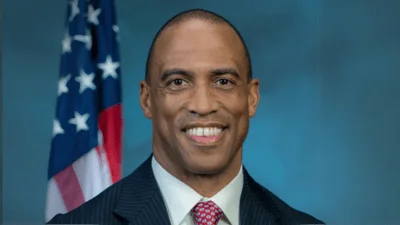Good morning. Thank you for the warm welcome. I’ve become something of a seasoned traveler during these last two-and-a-half years. So, I know great hospitality when I see it.
I’m thrilled to be with you – and I’m looking forward to your questions and our conversation. But you should know that it was Kathleen who really pushed me to attend.
Back in February, Kathleen and I ran into each other at the U.S. Chamber of Commerce, where President Obama made the important business case for investing in America’s roadways, railways, runways, and transit systems. The president said that America owes its entrepreneurs the safest, fastest, most efficient, and most reliable ways to move goods and information. But it was Kathleen who really drove the point home: These same investments are what makes America more appealing to tourists and travelers. These same investments are what makes America safer and easier to navigate once these tourists and travelers arrive.
Now, some of you know that this week is National Transportation Week, an opportunity for us to celebrate the extraordinary contributions of the people who help us get from one place to another safely. Well, before we get to our discussion, I thought I would share a few highlights of what America’s dedicated transportation professionals are doing to make it safer, easier, and more attractive for tourists and travelers to visit our parks and natural treasures; to enjoy our food and culture; and to stay at our hotels, inns, and bed and breakfasts.
First, through our Open Skies program, we’re increasing the number of routes travelers can take to get here – and the number of carriers they can choose to fly on. Think about it: Twenty years ago, the U.S. had zero open skies agreements. Now, we have more than 100 partners. As a consequence, we’ve revolutionized the way people travel and do business. Airlines can fly the routes that passengers want at prices the market sustains. American companies – the heart of our economy – can keep goods flowing through the world’s arteries of commerce. And we’re working toward additional partnerships – toward safely bringing even more of these benefits to the traveling public.
Second, once passengers are booked and on board, we’re making sure that their safety and rights as consumers are respected. That’s why we’ve issued new rules limiting how much time passengers can sit in planes stuck on the tarmac; requiring airlines to refund baggage fees if they don’t deliver your luggage on time; mandating that airlines prominently disclose all potential fees – including luggage fees, meal fees, change fees, or cancellation fees; and doubling the amount of voucher money for which passengers are eligible if they’re involuntarily bumped from an oversold flight.
Third, we’re making historic investments in America’s roads, bridges, streetcar and light rail systems, and high-speed rail. President Obama has set the goal of connecting 80 percent of Americans with high-speed rail within a quarter century – and we’re well on our way. That means travelers will be able to get from southern California to Las Vegas, or from Boston to Washington, or from Detroit to Chicago to St. Louis, in a fraction of the time it takes to drive.
I’ve visited Europe and Asia – and I’ve been deeply impressed with their high-speed systems. There’s no excuse for the world’s best passenger transportation systems to be somewhere else. So we’re hard at work trying to catch up and making sure visitors can get around the United States without boarding a plane or renting a car if they choose not to.
And, finally, let me say this: As we plan and build for the future, we’re ending the practice of designing transportation systems independently from one another. Everything we build – our airports, our train lines, our metro transit networks – should link together so a visitor from Europe or Asia can get off the flight, onto the train or streetcar, and on their way to wherever they’re going. In our line of work, we call this multi-modalism. In your line of work, it means more customers enjoying your services and hospitality.
And when President Obama talks about winning the future, this is what he means. In the short-term, we’re creating good, quality construction jobs building the transportation systems of tomorrow. As more flights arrive at our airports – and as high-speed rail races Americans from origin to destination – we’re creating new opportunities for you to do business in America’s great cities or parks, and with a larger base of customers. Over the long-run, we’ll all be more economically competitive as a result.
I think that’s a vision every American – Democrat and Republican – can support. And achieving this vision is the work in which we must be engaged together.
So, with that, let’s get the conversation started. Thank you again for your hospitality, today and every day. I’m delighted to be here.









